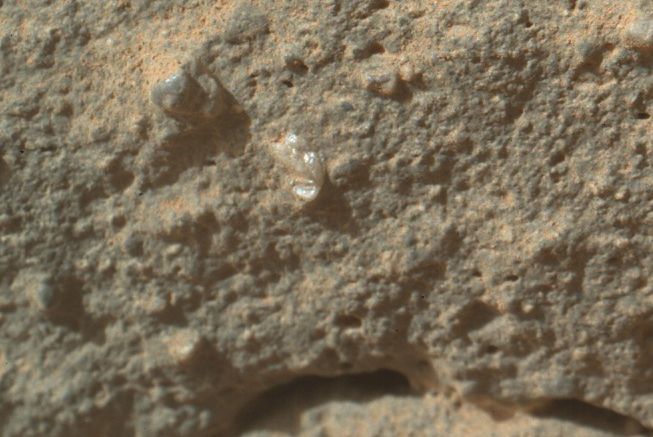Curiosity Finds Flower And Digs Into Mars

SEE ALSO: Landing On Mars, Curiosity Takes A Stroll
To further add to the possibility of a stream was the discovery of what has been dubbed the Mars “flower.” The Mars “flower” is not actually the remains of a dead plant but is instead, as Aileen Yingst of The Planetary Science Institute said, “A relatively large mineral grain, or “a pebble if you wish.” She also goes on to explain that the flower “Could be a lot of things but without some chemical information to back me up, I’d really hesitate to say what it is. (Again Scientists hate to deal with absolutes)
What the evidence does point to though is the possibility of a Martian river or even a lake. The researchers have come up with the nickname Gillespie Lake in case their hypothesis is proven.
With such strong evidence, the Curiosity team has deemed the present as a good time to use the drill built into the Curiosity, for the first time. Richard Cook the project manager has also stated that drilling should begin in the next two weeks.
The drill will be able to dig through about 2 inches of Mars’ sediment and by drilling the hope is that Curiosity will be able to find additional minerals, particularly organic ones. This will also be the first time anyone has drilled into Mars, so the team is also eager to see if Mars will have its own sets of challenges compared to drilling on Earth.
SEE ALSO: Curiosity Finds Bright Object In First Scoop Of Martian Soil
Ideally the mission will discover if Mars was once hospitable or possibly still hospitable. It has been 5 months since Curiosity landed on Mars and although it wasn’t able to find Marvin the Martian, perhaps there could have been bacteria in Mars’ past.
Curiosity has made the universe, just a little bit smaller and may one day have us questioning our part in it. Until then though, we can continue to look to Mars with a bit of curiosity.
You can read more coverage on the Curiosity here.
Reach Contributor Roger Aguirre here.



